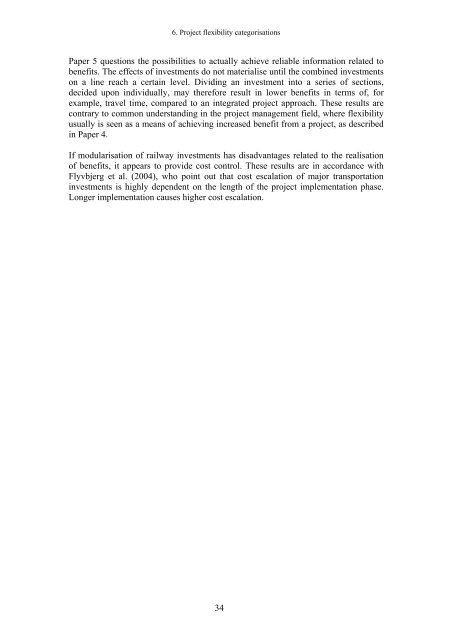Link to thesis - Concept - NTNU
Link to thesis - Concept - NTNU
Link to thesis - Concept - NTNU
You also want an ePaper? Increase the reach of your titles
YUMPU automatically turns print PDFs into web optimized ePapers that Google loves.
6. Project flexibility categorisationsPaper 5 questions the possibilities <strong>to</strong> actually achieve reliable information related <strong>to</strong>benefits. The effects of investments do not materialise until the combined investmentson a line reach a certain level. Dividing an investment in<strong>to</strong> a series of sections,decided upon individually, may therefore result in lower benefits in terms of, forexample, travel time, compared <strong>to</strong> an integrated project approach. These results arecontrary <strong>to</strong> common understanding in the project management field, where flexibilityusually is seen as a means of achieving increased benefit from a project, as describedin Paper 4.If modularisation of railway investments has disadvantages related <strong>to</strong> the realisationof benefits, it appears <strong>to</strong> provide cost control. These results are in accordance withFlyvbjerg et al. (2004), who point out that cost escalation of major transportationinvestments is highly dependent on the length of the project implementation phase.Longer implementation causes higher cost escalation.34
















